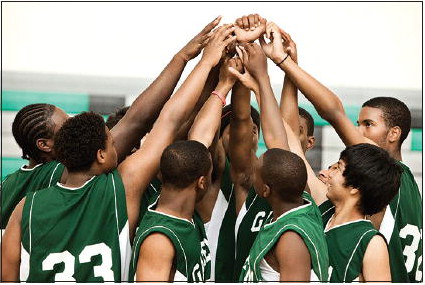Safety Tips for Scholastic Sports


Students have plenty of reasons to participate in school sports and many of them confirm what the experts say regarding the benefits of such pursuits.
The National Federation of State High School Associations (NFHS) indicates some of the main benefits include: Building relation ships through the team Developing care and empathy Maintaining strong physical fitness Understanding limi tations and how to push past them Listening to and learning from coaches Millions of children participate in scholastic sports and recreational leagues across the country.
Young athletes can take certain steps to prepare for the upcoming season.
Get a sports physical
Most sports programs will not enroll participants without a recent sports physical. Physicals typically must be updated every year. Students and parents should check the date on athletes' most recent physical examination and be sure that they schedule one prior to the start of the season. Remember to bring along any athletic forms that will need to be filled out and officially signed by health care professionals.
Create a portal account
Schools now rely primarily on technology to organize the acquisition of health records and other pertinent information so that students can participate in play. Services like Student Central and GoTo- MySportsPhysical enable schools to aggregate forms and sports clearance infor- mation in one place. Us age of these systems typically requires setting up both parent and student accounts and then populating the information and digitally signing as needed.
In addition to uploading sports physical forms, the portal may ask users to sign waivers and to confirm that they have read information regarding injury risk.
Check gear
Student athletes should confirm which gear they may need for the upcoming season. Check last season's gear to ensure it still fits and remains in good working order.
Get in shape
Some athletes continue with their training regimens all year long. Others may take breaks between seasons. It may be necessary to create a new exercise plan so athletes can start acclimating their bodies to the demands of the sport.
Undergo a concussion baseline test Some schools require a concussion baseline test prior to sports participation. It is a specific questionnaire for each player that will create baseline data regarding processing speed, symptoms, pain levels, balance, and physical abilities, according to CognitiveFx. Should a sports injury occur, the test will be repeated and the results can be compared to assess depth of injury.
The new scholastic season may be beginning shortly and student athletes need to take certain steps to ensure they're eligible and able to play when practices start.
No athlete, professional or amateur or otherwise, is immune from injury. Most athletes rec ognize the risk for injury is always present, but the thrill of competition and challenging oneself physically is enough to relegate injury concerns to the back burner.
Sports injuries may be part of the competitive athletics equation, but that does not make them any easier to handle when they occur. One of the more serious injuries that can occur when playing sports does not involve fractures or sprains. Concussions are brain injuries that can cause temporary loss of normal brain function. The American Association of Neurological Surgeons reports that concussions are caused by direct trauma to the head. Potential causes of such trauma can be a fall or a blow to the head. Involvement in a motor vehicle accident also can cause concussion.
Concussions affect non-athletes as well as athletes, which is important for people from all walks of life to recognize. However, athletes who compete in contact sports like football, ice hockey, rugby, and soccer should be especially mindful of concussions. That's because contact sports tend to have the highest concussion rates.
Concussion rates can be hard to tabulate, as many athletes may suffer mild concussions and never report any issues to parents or coaches. However, a 2019 study published in the journal Pediatrics found that, between the 2013-14 and 2017-18 school years, the three sports with the highest concussion rates were boys' football, girls' soccer and boys' ice hockey. Of course, adult athletes also can suffer concussions, which underscores how important it is that all individuals, and especially athletes competing in contact sports, learn to recognize the symptoms of a concus- sion. With that in mind, the AANS notes these are some common symptoms of concussion: Confusion Headache Vision disturbances (double or blurry vision) Dizziness or imbal –
ance Nausea or vomiting Memory loss Ringing ears Diculty concen –
trating Sensitivity to light Loss of smell or taste Trouble falling asleep Concussions should be taken seriously, and it's important to note that most people fully recover after a concussion. However, the AANS urges people to seek immediate medical attention if symptoms have not gone away within 10 to 14 days. In addition, certain situations that can arise after suffering a concussion should be brought to the attention of a physician. Such situations include: Headache worsens or does not go away Speech is slurred, and feelings of weakness, numbness or decreased coordination present Signicant nausea or repeated vomiting Seizures Loss of conscious –
ness
Inability to wake up Symptoms worsen at any time History of multiple concussions Concussions are serious brain injuries that should not be taken lightly.
Athletes and parents of young athletes should discuss concussion prevention strategies with coaches and report any issues to a physician immediately.
More information about concussions can be found at aans.org.







